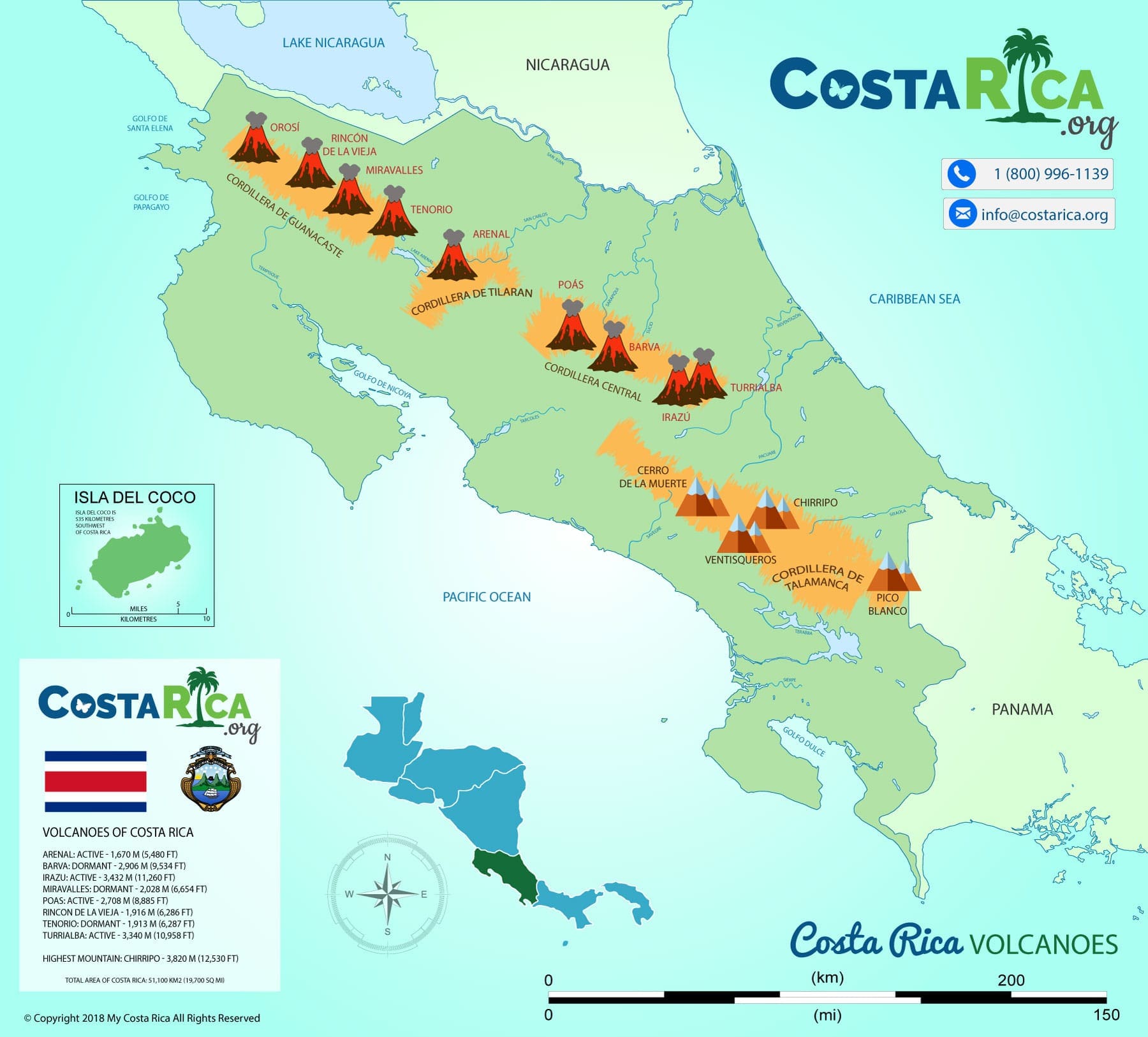
Costa Rica’s Volcanoes Unveiled: 2023 Updates on Elevations, Activities, and Hiking Trails
Costa Rica’s Volcanoes: Activity Status and Eruptions
Costa Rica, an awe-inspiring land of ecological diversity, is home to over 200 volcanic formations. From the towering Arenal to the enigmatic Rincón de la Vieja, each volcano tells a story of geological marvels and natural beauty. Travelers, adventurers, and researchers flock to these breathtaking sites to experience Mother Nature’s grandeur. If you’re keen to know more about Costa Rica’s volcanoes and their current status, including up-to-date information on Rincón de la Vieja’s 2023 eruptions, then read on.
Arenal Volcano
Elevation: 1,657 meters
Current Status: Active
Hiking Trails: Arenal 1968, La Fortuna Waterfall Trail
Latest Activity: The last major eruption was between 1968 and 2010, but it remains active with minor emissions.
Arenal has remained Costa Rica’s most iconic volcano. Its last significant eruption period spanned from 1968 to 2010. While the volcano has transitioned into a quieter phase, it still occasionally releases steam and ash.
Poás Volcano
Elevation: 2,708 meters
Current Status: Active
Hiking Trails: Main Crater, Laguna Botos
Latest Activity: Significant eruption in 2017; the park has reopened with monitoring.
Just a short drive from San José, Poás boasts one of the world’s largest active craters. A major eruption in 2017 caused the temporary closure of its national park, but it has since reopened with monitoring in place.
Irazú Volcano
Elevation: 3,432 meters
Current Status: Dormant
Hiking Trails: Principal Cráter, Diego de la Haya
Latest Activity: Last erupted in 1963; now dormant.
Irazú is Costa Rica’s tallest volcano. It last erupted in 1963, coinciding with U.S. President John F. Kennedy’s visit to the country. Today, visitors can enjoy its scenic views without the fear of eruptions.
Turrialba Volcano
Elevation: 3,340 meters
Current Status: Active
Hiking Trails: Currently closed due to activity
Latest Activity: Ongoing eruptions impacting local communities and San José.
This active volcano has seen a series of eruptions over the past decade, impacting local communities and even reaching the capital city, San José. Monitoring is ongoing to assess its activity.
Tenorio Volcano
Elevation: 1,916 meters
Current Status: Dormant
Hiking Trails: Rio Celeste Waterfall, Tenorio Lookout
Latest Activity: Dormant; no recent eruptions.
Tenorio is renowned for the celestial-blue Rio Celeste that flows within its national park. Though it hasn’t erupted recently, it remains a hub for biodiversity.
Orosí Volcano
Elevation: 1,659 meters
Current Status: Dormant
Hiking Trails: Orosí Lookout, Catarata trail
Latest Activity: No known activity for 3,500 years.
Orosí is an off-the-beaten-path gem. With no recorded activity for the past 3,500 years, it offers tranquil natural settings perfect for hiking and bird-watching.
Rincón de la Vieja
Elevation: 1,916 meters
Current Status: Active
Hiking Trails: Las Pailas, Cangreja Waterfall (availability may vary due to recent activity)
Latest Activity: In 2023, significant eruptions included ash plumes reaching up to three kilometers in March and a minor pyroclastic flow in July.
Rincón de la Vieja, particularly noted for its 2023 activity, has been in the spotlight. According to the National Seismological Network and the Volcanological and Seismological Observatory of Costa Rica, this volcano has been restless. A significant eruption in March 2023 saw ash plumes reaching heights of up to three kilometers. Another remarkable event took place in July 2023 when the volcano expelled a minor pyroclastic flow, leading to temporary trail closures and heightened scientific monitoring.
Whether you’re planning to scale the heights of Irazú, the tallest of the bunch, or seeking the quieter trails of the dormant Orosí, Costa Rica’s volcanoes offer a range of experiences that cater to all interests and fitness levels. Just remember, if you’re aiming for an adventure around these natural wonders, always consult the latest reports and guidelines to ensure you have a safe and unforgettable experience.
By equipping yourself with this information, you’ll not only enhance your travel experience but also respect these geological wonders that have been shaping Costa Rica’s landscape for millennia.
Map of Volcanoes











